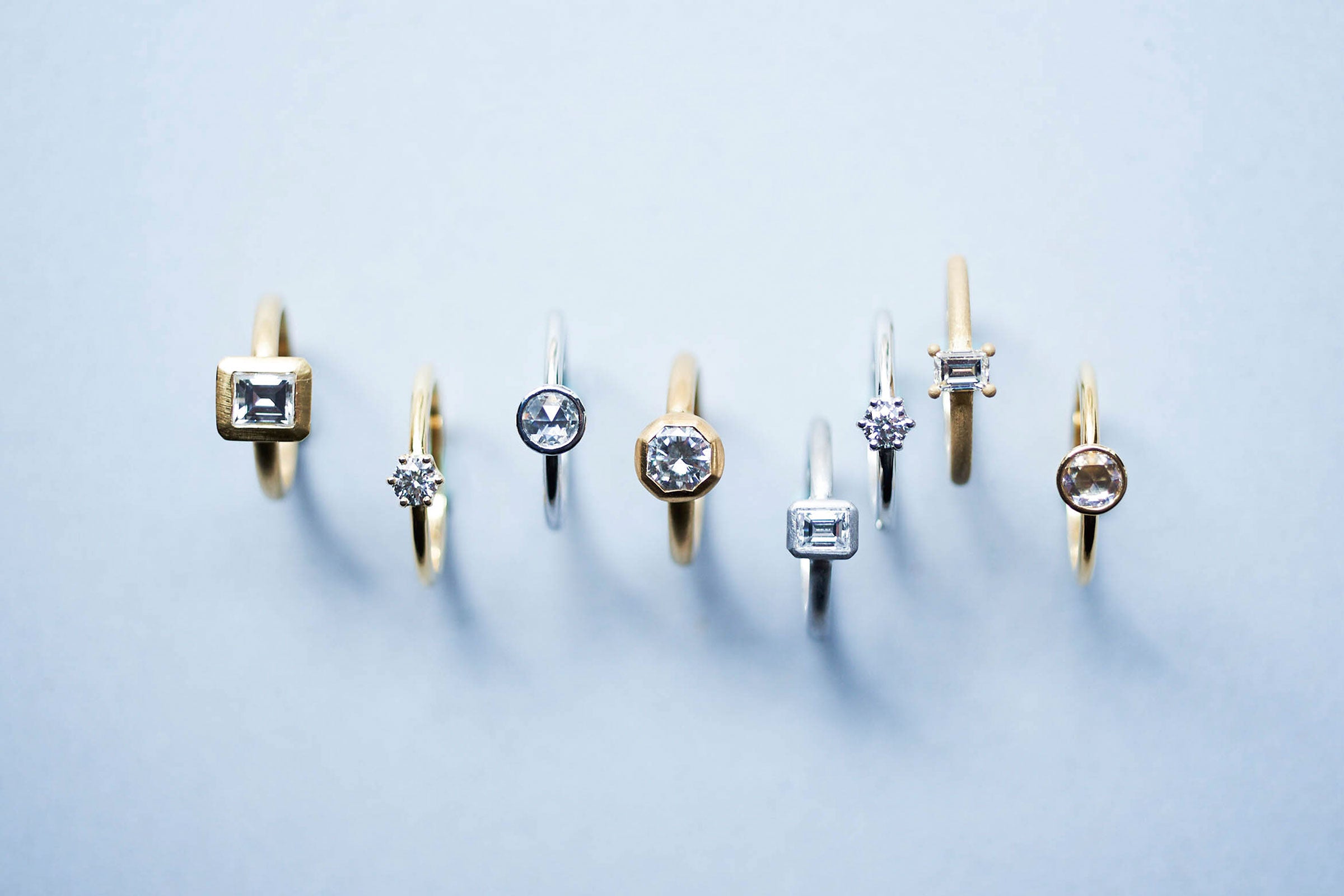How rings are made: forging and casting

There are two main ways to make rings.
These are the two manufacturing methods: "forging" and "casting."
Some of you may have come across this word for the first time when creating your engagement or wedding ring.
Forging

This is a manufacturing method in which the metal that will become the base of the ring is heated and then hammered and stretched to form it into a ring shape.
The metal crystals are aligned during the hammering process, resulting in a strong product.
At KARAFURU, our craftsmen use traditional techniques to repeatedly hammer the products and finish them by hand.
Nowadays, there are pressing methods in which metal is compressed using a press, but the traditional manufacturing method has the warmth and charm that can only be achieved by hand by artisans, and the wearing comfort is different.
Forging is stronger, less prone to deformation than casting, and has a harder surface, which makes it shine better when polished. On the other hand, it can be difficult to create delicate and complex designs, and it can be difficult to make large size adjustments.
This is a recommended manufacturing method for those who want to wear the ring for a long time and who value durability. As the word "forged" suggests, the ring is made by forging the metal, so I feel that it has a somewhat powerful feel to it. It is perfect for wedding rings that strongly connect the bond between two people.
▶︎Click here for the forged ring "TOU"

Casting

This is a manufacturing method in which metal that has been heated to a sludgy state is poured into a pre-made mold to create a ring. The molten metal hardens quickly when cooled, so it can be made in a short time.
Since it is possible to create three-dimensional models using a computer, it is easy to create complex and intricate designs.
Casting is particularly good at producing delicate designs and designs with curved arms such as S-shapes and U-shapes.
This method allows for mass production, so the cost of the ring can be reduced in some cases. However, when the metal is poured into the mold, air bubbles can form and the density of the metal can become uneven, making it a little softer and less durable than forged rings. It is also prone to scratches, but this can also be enjoyed as a "flavor" that shows the years that have passed.

・
・
Today we talked about how rings are made: forging and casting.
Each ring has its own characteristics. It might be a good idea to decide on one while imagining what the two of you will want the ring to be. Enjoy the process of making the ring while thinking about the future.
We will send you the BRIDAL BOOK
We will send you a free catalogue introducing KARAFURU engagement and wedding rings.
▶︎Click here to request a catalogue
Reservations and inquiries
Please feel free to contact us.
Please come to our store and we will listen to your concerns and give you a chance to try on items.
We have received online orders from many customers from far away, including overseas. Please place your order with confidence as we will respond to your inquiry immediately.
Upon request, we will exchange images, send sample rings, and size gauges.
▶︎For reservations and enquiries, click here
▶︎Click here to contact us via LINE
KARAFURU Daikanyama
03-6452-5427
info@karafuru.jp
1F, 2-20-14 Ebisu Nishi, Shibuya-ku, Tokyo
OPEN: 11:00-18:00 / CLOSE: Mon. & Tue.
Right outside the north exit of Daikanyama Station/ 7 minutes walk from Ebisu Station
*Please make a reservation if you wish to visit regarding engagement or wedding rings.
▶︎For reservations and enquiries, click here
▶︎Click here to contact us via LINE
▶︎Click here for more information on KARAFURU engagement/wedding rings
